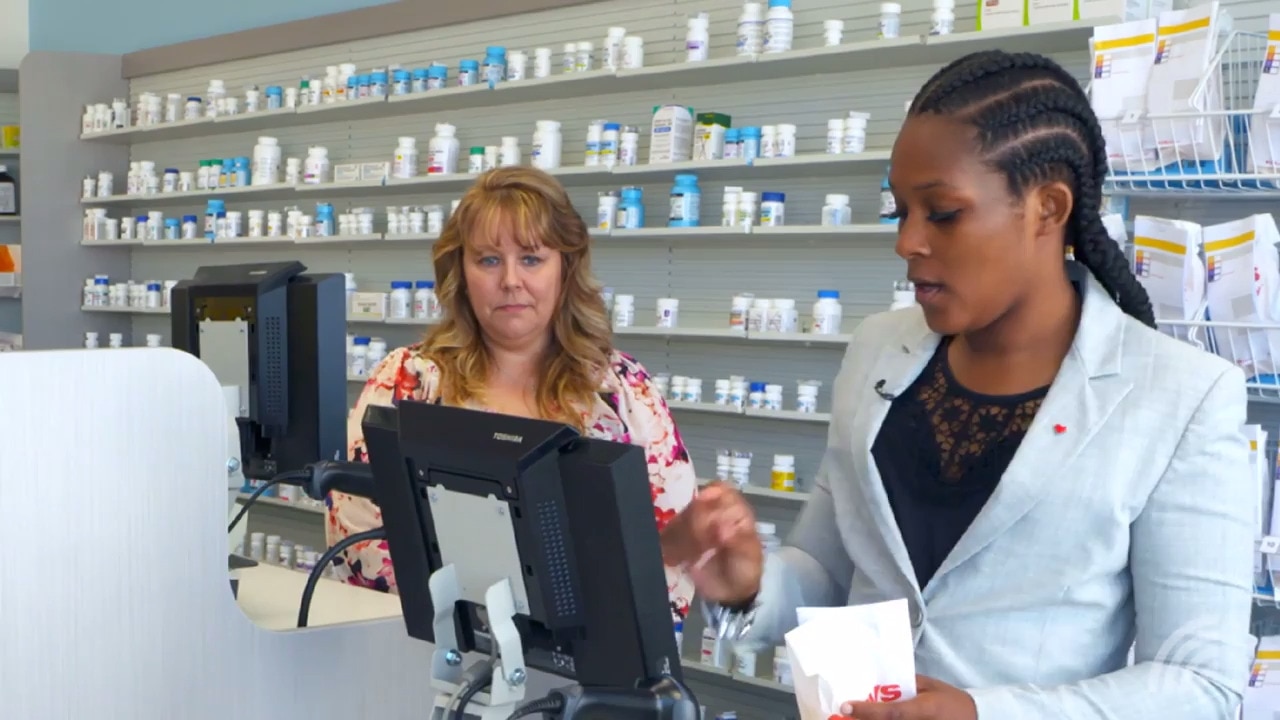In the midst of a very important discussion around prescription drug pricing in Washington, DC, CVS Health sponsored an event with CQ Roll Call titled “Empowering Patients as Partners in Health Care” to focus on the issue and the consumer experience in health care today. At the event, policymakers and health care policy experts discussed the progress being made to make the health care system work better and identified areas where more solutions are needed. Tom Moriarty, Chief Policy and External Affairs Officer, and General Counsel for CVS Health, addressed the affordability of prescription drugs – one of the most critical issues impacting patients today.
Moriarty emphasized how high drug prices can have an adverse effect on patients’ health. For example, when medications are above $200 in out-of-pocket costs per prescription, more than 40 percent of patients do not pick up their prescriptions. To ensure patients can afford their medicines and take them as directed, Moriarty outlined the importance of the pharmacy benefit management (PBM) tools and solutions CVS Health is pioneering to improve medication adherence and reduce patients’ out-of-pocket costs. He also highlighted policy ideas that can increase market competition and provide the transparency that consumers, providers and pharmacists need to get the most effective drug at the lowest cost.
Innovative Solutions to Address Rising Drug Costs
The status quo of rising drug prices is not acceptable. Moriarty highlighted how CVS Health is implementing solutions to mitigate the effects of manufacturer-driven price increases. We are:
Pioneering the use of point-of-sale rebates and started by offering them to our CVS Health colleagues. As a result, we’ve seen adherence improvements of four to six percent. Additionally, we offer point-of-sale rebates to our clients – making this benefit available to 10 million people covered by CVS Caremark plans.
Utilizing preventive drug lists for colleagues to make medications for common chronic conditions, including diabetes, hypertension and asthma, available at a zero-dollar copay. Data show that this can lead to better adherence and provide medical cost savings and productivity gains.
Expanding visibility into prescription drug costs – starting at the doctor’s office and culminating at the pharmacy counter. At the doctors’ office, we provide real-time benefits to ensure prescribers have information on patients’ covered benefits and what patients will pay out-of-pocket under their plan for a specific drug. At the pharmacy counter, our retail pharmacists are using the Rx Savings Finder to help members save, in some instances, an average of $420 per year.
Rebates are Discounts that Help Lower Costs for Patients and the Government
There has been a lot of discussion about the role of rebates in the drug pricing system, which are discounts used to reduce costs for patients and government programs. Moriarty debunked the myth that drug companies increase prices as a result of having to pay rebates, pointing to the fact that there is no correlation between manufacturer-driven price increases and these rebates and discounts. In fact, list price is increasing faster for drugs with little competition than it is for medications with competition and substantial rebates and discounts.
Despite the fact that brand drug manufacturers increased list prices by an average of 9.2 percent annually between 2008 and 2016,QuintilesIMS Institute, Medicines Use and Spending in the U.S. (May 2017). https://structurecms-staging-psyclone.netdna-ssl.com/client_assets/dwonk/media/attachments/590c/6aa0/6970/2d2d/4182/0000/590c6aa069702d2d41820000.pdf?1493985952 CVS Caremark has been able to keep drug price growth nearly flat at 0.2 percent by negotiating rebates and discounts and encouraging the use of lower cost, clinically appropriate medicines.
Policy Solutions to Lower Drug Costs for Patients
PBMs are very effective at lowering drug prices when there is competition, but there is still a substantial number of products that face limited to no competition. In addition, due to the increased enrollment in high-deductible health plans, the deep discounts being driven by PBMs are not being seen at the pharmacy counter by patients when they are in their deductible phase. To address these challenges, Moriarty presented four patient-centric solutions:
Medicare should drive the adoption of real-time benefits to give patients and their physicians visibility into lower costs and offer an option for a point-of-sale rebate Part D plan.
For plans associated with health savings accounts, policymakers can take immediate action to change Internal Revenue Service (IRS) rules to allow those plans to provide first-dollar coverage for drugs outside of the deductible, even for maintenance medications intended to treat an existing chronic condition.
By prohibiting pay-for-delay agreements and passing the Creating and Restoring Equal Access to Equivalent Samples (CREATES) Act to stop Risk Evaluation and Mitigation Strategy (REMs) abuse, we can curb anti-competitive practices and help bring lower cost, clinically equivalent generic medications to market more quickly.
Lastly, we must accelerate the pathway to bringing biosimilar drugs to market. Biosimilar drugs have the potential to save the health system $54 billion dollars over ten years, but our country is far behind in accessing these medicines. In Europe, 53 biosimilar medicines have been approved. In contrast, only seven are on the market in the U.S. today.
CVS Health will continue to innovate and use every tool at our disposal to bring down the costs of drugs while also advocating for effective policies that increase access to affordable medications.
For more information on how CVS Health is working to expand access to more affordable and effective health care, check out our Cost of Care information center and the CVS Health Impact Dashboard. To stay informed about the latest updates and innovations from CVS Health, register for content alerts and our bi-weekly health care newsletter.
